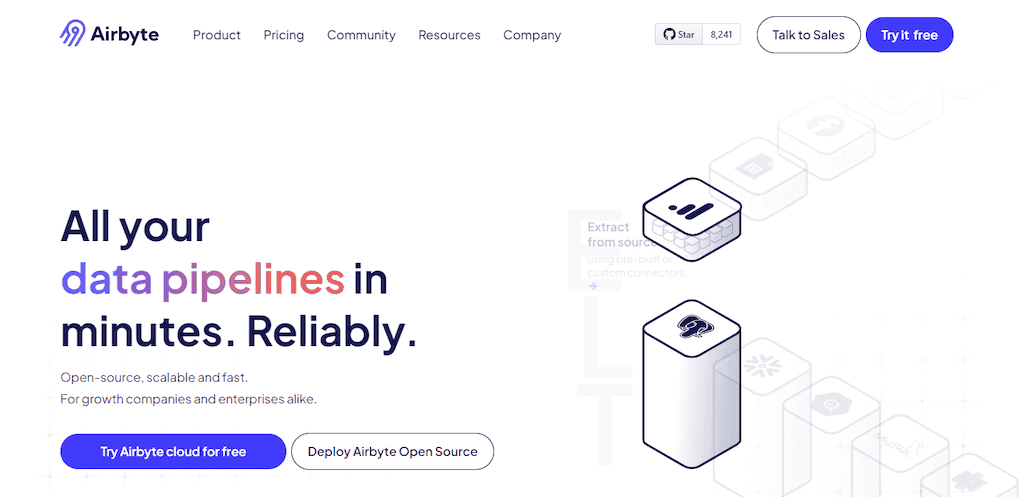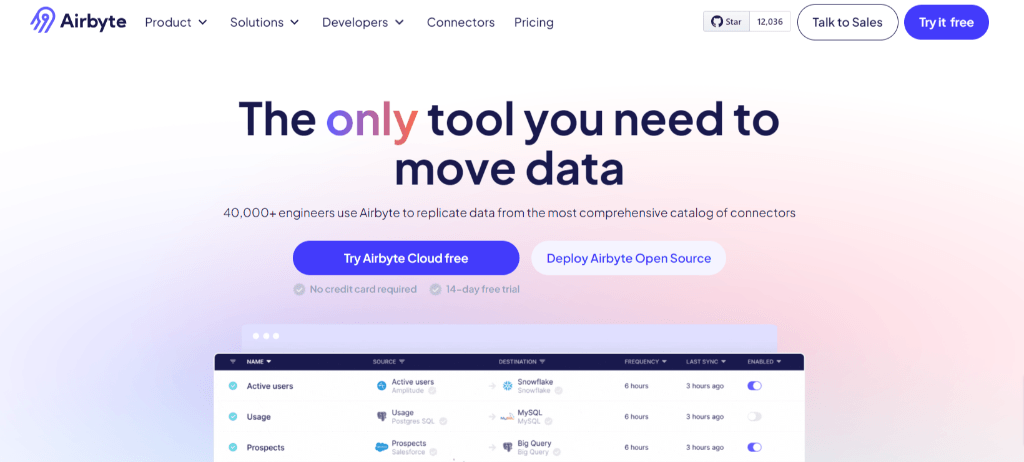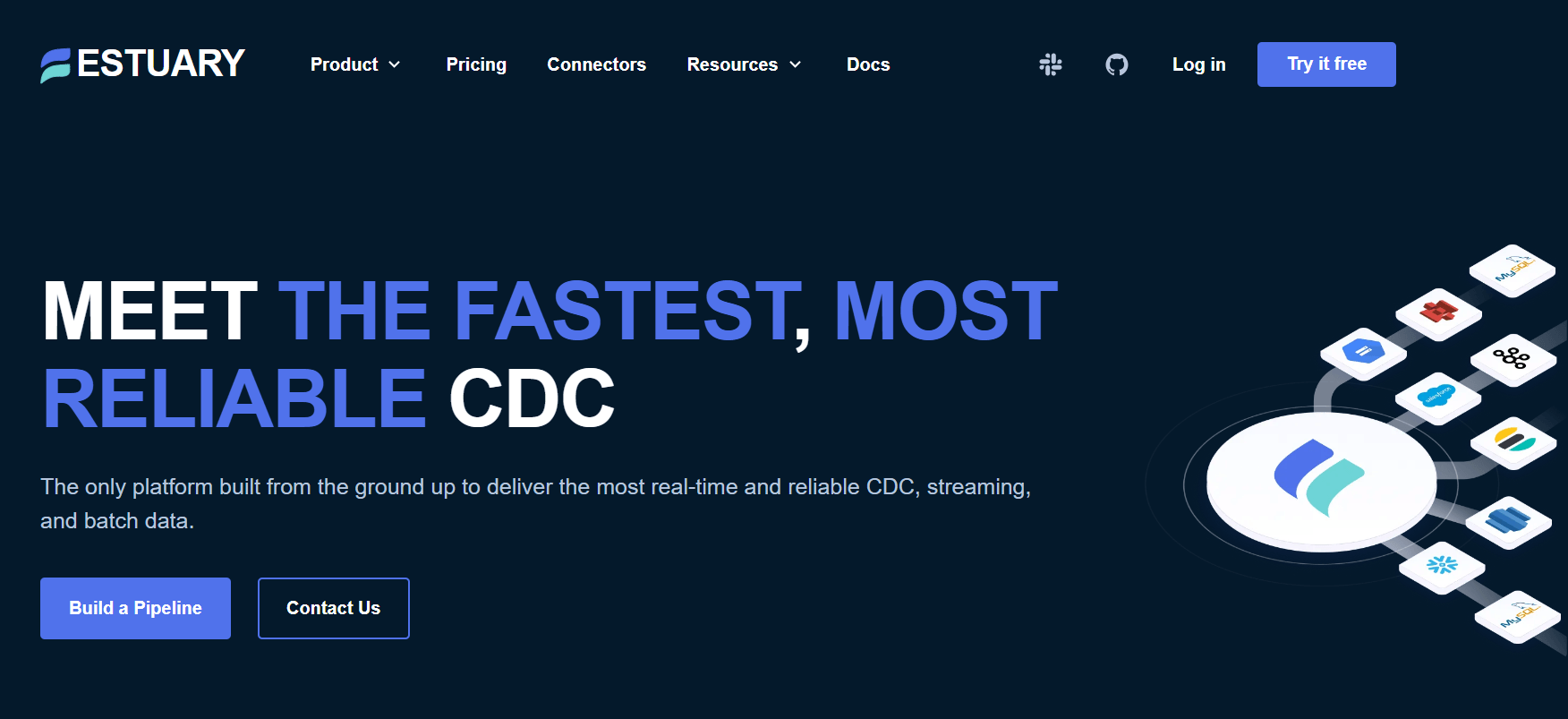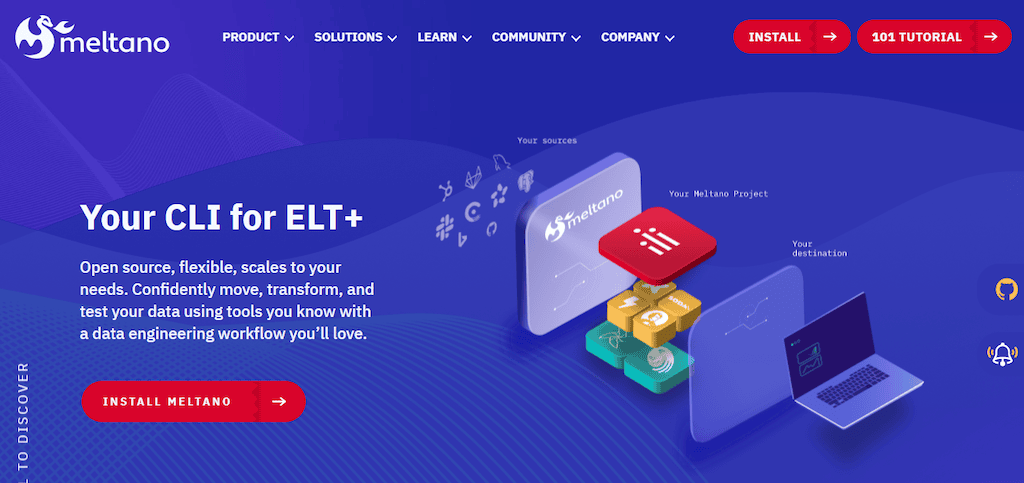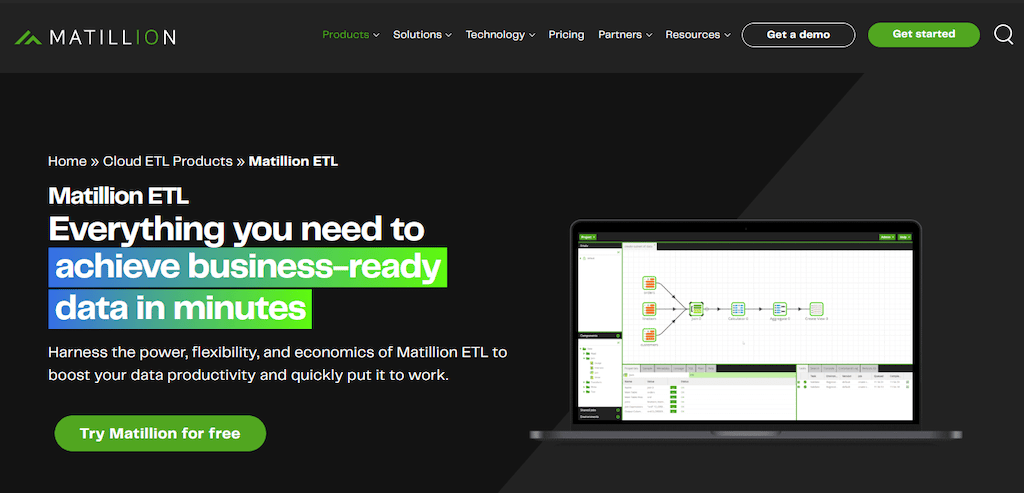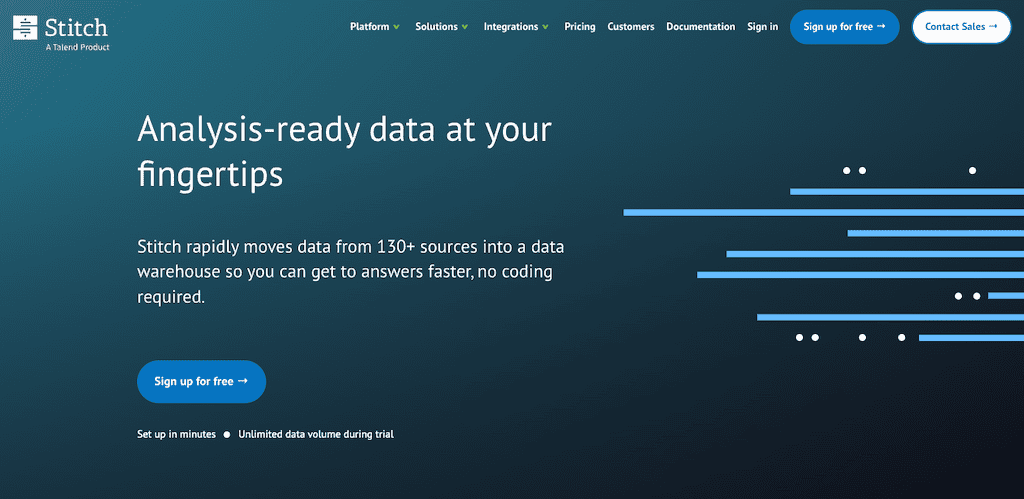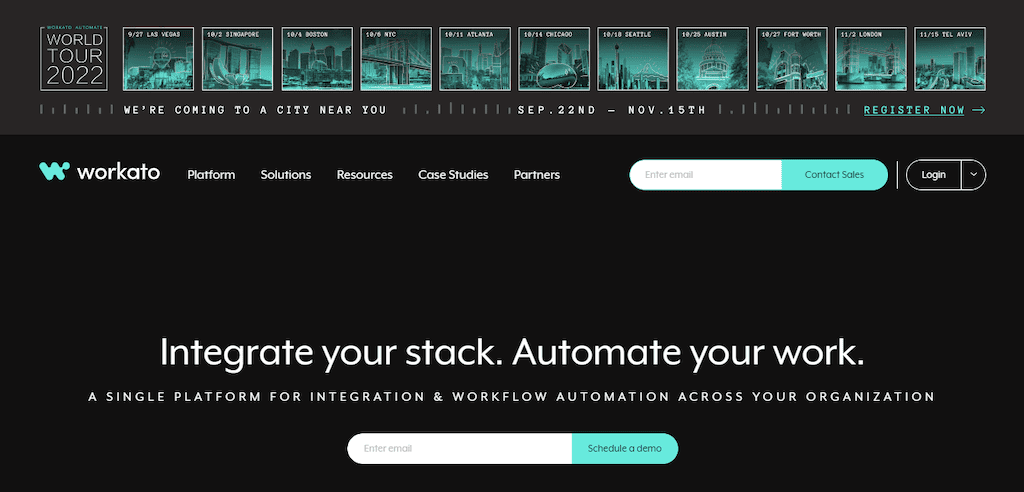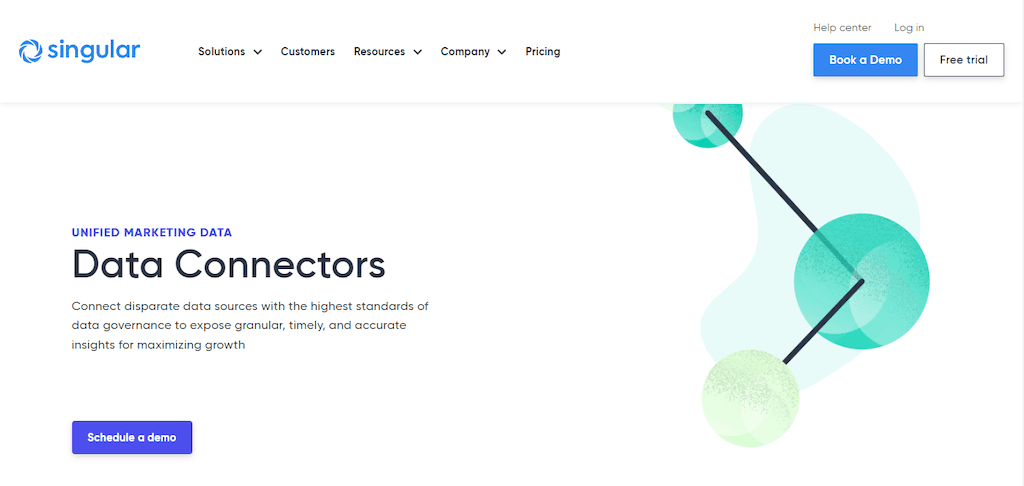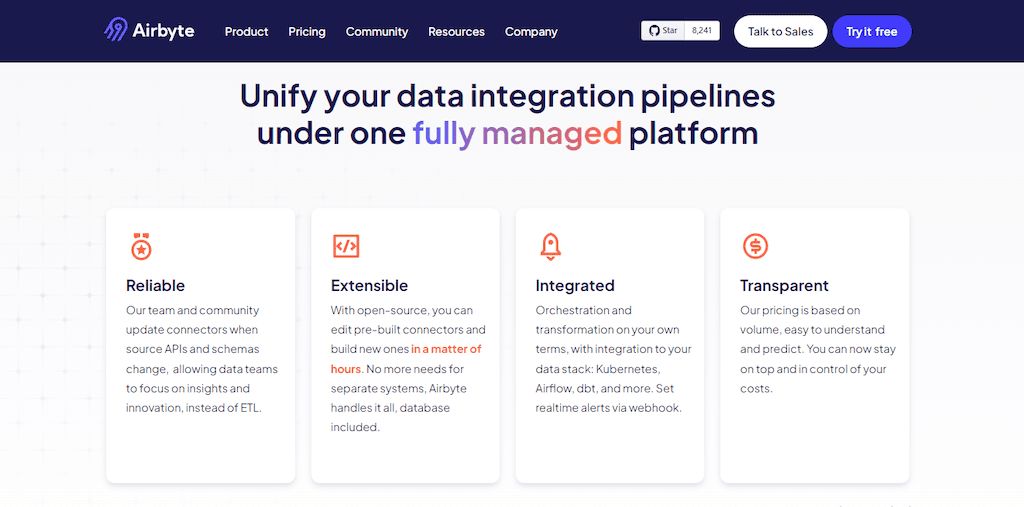
As the demand for data-driven insights grows across industries, data teams need efficient ways to integrate diverse data sources and destinations. This is where data integration tools like Airbyte—and its many alternatives—come into play. With a variety of Airbyte alternatives on the market, ranging from new entrants to established tools with a decade of experience, finding the right fit can be challenging.
Today’s post will help you navigate these choices by exploring seven top Airbyte alternatives. By the end, you’ll understand Airbyte’s strengths and limitations and be better equipped to choose the best tool for your business needs.
But first, let’s start with an overview of data integration and a quick introduction to Airbyte.
What is Data Integration?
Data integration is the process of connecting data between systems within a company’s data infrastructure. These systems can be databases, data warehouses, applications, event streams, and more.
The main unit of data integration is a data pipeline. Each data pipeline ingests data from a source and loads it to a destination. Therefore, a given organization will need a large number of different pipelines to connect many different combinations of systems.
That’s where a platform or tool like Airbyte comes in.
What is Airbyte?
Airbyte is an open-source ELT data integration tool that also offers a no-code SaaS platform. Since its launch in 2020, it has quickly gained popularity in the ELT and data integration space.
Like other ELT platforms, Airbyte uses connectors to integrate various data sources and destinations. What sets Airbyte apart is its focus on supporting a wide range of connectors, achieved through a community-driven open-source model that encourages contributions from users and developers.
Key features of Airbyte:
- Open-Source and SaaS Options: Choose between self-hosted and managed ELT versions.
- Transformation Capabilities: Integrates with dbt, allowing engineers to design custom transformations within ELT workflows.
- Extensive Connector Library: Broad support for data sources and destinations in ELT processes.
- Community Contributions: Actively supported by user and developer contributions.
Limitations of Airbyte: Key Challenges to Consider
- Inconsistent Connector Quality: Due to its open-source model, connectors vary in quality since many are community-built. This can lead to uneven performance across connectors.
- Frequent Updates: As a rapidly evolving platform, Airbyte introduces frequent updates, which may disrupt established workflows and require users to adapt to new changes.
- Limited Transformation Capabilities: Airbyte mainly supports ELT workflows, focusing on extraction and loading rather than in-platform transformations, which requires users to integrate with tools like dbt for post-load transformations.
- Dependency on Self-Hosting for Open-Source: The open-source version requires users to manage their own infrastructure, adding complexity and resource needs for teams that choose this option over the SaaS.
Top 7 Airbyte Alternatives
Here's a list of the top 7 Airbyte alternatives & competitors in 2024:
- Estuary
- Meltano
- Matillion
- Fivetran
- Stitch Data
- Workato
- Singular
Estuary
Estuary Flow is our top pick for the finest data integration platform. It combines open-source code with a cloud-hosted, low-code SaaS platform that’s meant to empower the whole team, not just engineers.
Where Airbyte’s focus is on a variety of SaaS connectors, Estuary Flow focuses on high-scale technology systems like databases, filestores, and pub-sub. And unlike Airbyte and most other data integration tools, Flow is a real-time data streaming system.
Flow can be used to build analytical pipelines that end at the data warehouse, as well as operational pipelines (sometimes called “reverse ETL”).
Flow is a great option if you’re looking to stream huge datasets while keeping costs low — and to do so in milliseconds.
- Advanced CDC and Real-Time Capabilities: Estuary Flow excels in Change Data Capture (CDC) and real-time streaming, capturing record changes with ultra-low latency and minimal source load. It’s optimized for high-frequency updates, ideal for complex, large-scale data environments.
- Flexible Deployment Options: Estuary is the only vendor to offer open-source, private cloud, and public multi-tenant SaaS deployments, giving companies the flexibility to manage data in a way that best meets their security and infrastructure needs.
- High Scalability and Efficiency: With proven performance at 7GB+/sec and sub-second latency, Estuary handles high volumes and maintains efficiency. This means users can move large datasets with minimal delay and resource use.
- Comprehensive Connectivity: Estuary offers 150+ native, low-latency connectors and supports over 500 Airbyte, Meltano, and Stitch connectors, providing extensive compatibility across sources and destinations. Native connectors are performance-optimized, while additional options add flexibility for varied use cases.
- Cost-Effective Pricing: Estuary offers competitive pricing, charging $0.50 per GB of data moved and $100 per connector per month.
Estuary Flow stands out with its real-time performance, flexible deployment, and broad connector support, making it an efficient, reliable choice for companies aiming to optimize their data integration.
Get started with Estuary Flow's free trial today and see how easy it is to build high-performance data pipelines.
Meltano
Meltano is another powerful open-source data integration platform, often mentioned among top Airbyte alternatives. With extensive support for open-source connectors via Singer taps, Meltano stands out for its developer-friendly, CLI-first approach, specifically targeting data engineers.
Designed for pipelines-as-code, Meltano includes advanced features like CI/CD and version control, making it a strong choice for teams that prioritize coding workflows. As with Airbyte, Meltano integrates with dbt for transformation and supports Apache Airflow as an orchestrator plugin, adding flexibility for managing data pipelines.
This makes Meltano a compelling alternative for engineers looking for a more code-centric, customizable solution among the Airbyte alternatives.
Pros And Cons Of Meltano
| Pros | Cons |
|---|---|
| Robust CLI support and version control take advantage of programming best practices | UI is rudimentary and the learning curve is steep |
| Offers more connectors than any other platform on this list |
Matillion
Matillion is a self-hosted ETL tool, often considered among top Airbyte competitors, as it requires deployment on your own infrastructure—making it ideal for industries that prioritize data privacy and control.
Unlike many self-hosted options in the Airbyte competitors list, which are typically open-source and CLI-based, Matillion provides a user-friendly UI and offers dedicated customer support. Its UI-based transformation capabilities are robust, though it doesn’t integrate with external transformation platforms like dbt.
This makes Matillion a solid choice for organizations looking for an Airbyte competitor that emphasizes control, support, and an intuitive interface for data transformations.
Pros And Cons Of Matillion
| Pros | Cons |
|---|---|
| Self-hosted ETL with a user interface and full product support | Not self-service and increased vendor lock-in compared to cloud data services |
| UI-based transformations | UI can be challenging to master |
| Fewer connectors than others on this list |
Fivetran – Most Established Airbyte Alternative
Founded in 2012, Fivetran is one of the original cloud-based data integration platforms and remains a strong choice among Airbyte alternatives, trusted by thousands of customers globally.
Similar to Airbyte, Fivetran is a low-code tool offering a broad range of connectors. However, as a fully closed-source platform, all connectors are proprietary and developed exclusively by the Fivetran team. While Fivetran has long been a dominant force, recent advancements in other Airbyte alternatives have brought fresh competition to the landscape, giving users more choices in data integration solutions.
This solidifies Fivetran's place as a leading option for those considering Airbyte alternatives but who value a polished, established platform.
Pros And Cons Of Fivetran
| Pros | Cons |
|---|---|
| Offers a large number of connectors | No pre-load transformation capabilities |
| Being in the industry for a while, lots of information is available | No extensibility or open-source components |
| Pricing based on active rows only can save money compared to other tools that offer pure row-based pricing | Team is slow to address support requests |
| Easy-to-use UI |
Stitch Data – Best For Smaller Companies
Stitch Data, owned by Talend, is a cloud-based ETL platform designed for seamless data transfer to warehouses for analysis and serves as a popular alternative to Airbyte. With over 130 connectors and a self-service model, Stitch is particularly appealing to smaller companies that can utilize its free tier (up to 5 million rows per month) or choose an affordable Standard tier plan.
One of Stitch’s key advantages is its no-code setup, making it accessible to businesses of all sizes and technical backgrounds. This simplicity, combined with its scalability, makes Stitch a valuable choice for companies seeking an easy-to-use, budget-friendly alternative to Airbyte for their ETL needs.
Pros And Cons Of Stitch
| Pros | Cons |
|---|---|
| Extensibility and integration with open-source connectors through the Singer specification | Beyond the free tier, pricing is based on monthly rows, which can get expensive at scale |
| Orchestration and visibility features included | Minimal support for transformations |
| Integrates with other tools in the Talend Data Fabric |
Workato
Workato positions itself as an integration platform as a service (iPaaS), making it a unique alternative to Airbyte by focusing on full system integration rather than just data movement. Unlike traditional ETL and ELT tools, Workato enables real-time automation across multiple workflows, including data management and analytics tasks that span different data platforms.
This design places Workato in a distinct category from other data integration tools, as it connects numerous applications supported by Airbyte but with a broader, system-wide approach. This makes Workato ideal for organizations looking for a solution that integrates the entire data stack rather than individual data pipelines.
Pros And Cons Of Workato
| Pros | Cons |
|---|---|
| Real-time integration for small-scale analytic operational workflows | Can be expensive for some businesses |
| A large number of connectors are available | Not ideal for moving large amounts of data |
Singular
In the marketing world, data ingestion and consolidation are essential for effective analytics, with many tools requiring integration to capture meaningful insights. Singular stands out among Airbyte alternatives by focusing exclusively on the marketing niche.
This no-code platform is tailored for marketers, extracting data directly from marketing APIs and SaaS platforms into warehouses like Snowflake or Google BigQuery for analysis. Singular also provides features crucial to marketers, including conversion tracking and cost analytics dashboards, making it a specialized choice among data integration tools.
Pros And Cons Of Singular
| Pros | Cons |
|---|---|
| Extracts the most granular marketing data for in-depth analytics | You’ll have to look for another platform if you require a non-marketing pipeline |
| Strong schema normalization and validation prior to loading | |
| Integrations with analytics and fraud protection tools |
5 Things To Look For In An Airbyte Alternative
There isn’t a perfect Airbyte substitute out there since each organization has unique needs and requirements. However, there are a few factors you should consider before you make your choice.
Sources And Destinations
The wide variety of connectors is a huge part of the appeal of Airbyte, and also something to consider as you choose an alternative.
Integration quality and prioritization may be more important factors than sheer quantity.
For example, if you want to integrate with a lot of different SaaS APIs, Airbyte might be the right fit. If you care more about database CDC or integrating with pub/sub systems, Estuary is a better option. And if you’re looking for high-quality marketing integrations, Singular is the right pick.
Scalable Data Transfer
Not every data integration use case involves terabytes of data, but many do. Consider if the platform you choose will be able to perform for large backfills of historical data and variations in new data volume over time.
Also evaluate how the pricing model will scale, and whether it will be in your favor or the vendor’s.
Latency
What is the acceptable latency for your data? Airbyte and many of its competitors use batch data processing, which naturally introduces some amount of time lag.
If you need data changes to be reflected immediately, in seconds or milliseconds, you’ll need a real-time data integration system, which will narrow down your options considerably.
Usability And Learning Curve
Some of the tools on this list emphasize a no-code user interface but lack a CLI and support for engineering workflows. While this can be inclusive for a wider range of data stakeholders, it can be incredibly frustrating for data engineering teams.
On the other hand, CLI-first tools can be intimidating or downright impossible to use for non-engineers. Consider the people on the team that will be building and monitoring your pipelines, and base your decision on that.
Reliability
There is a lot to take into consideration when it comes to reliability. For example:
- What is the quality of open-source components?
- What is the quality of the tech support from the vendor?
- Does the platform provide resilience against outages and failures?
- How is data validated, and what happens if there’s a schema or transformation error?
Seeking out reviews and learning from the experiences of other customers is extremely helpful here.
Why Do Companies Choose Airbyte?
Here are a few reasons that make Airbyte a popular option.
Ease Of Use
There are two versions of Airbyte available. Airbyte Open Source is a self-hosted version where users must supply their own storage and processing resources. For data engineers, this is an approachable workflow.
Airbyte Cloud is Airbyte’s self-service SaaS product. It features an intuitive user interface and includes the use of Airbyte’s servers, so it’s easy to get started. A variety of stakeholders, not just engineers, can use Airbyte Cloud to create and monitor data pipelines.
Airbyte Is Extensible
No data platform is perfect. It’s common for a data integration platform to fall short of customers’ needs, especially when it comes to connectors. Often the customers decide to hand-code their own connectors to integrate systems that aren’t supported.
Some data integration vendors disallow this or make it quite challenging. By contrast, Airbyte encourages customer contributions in every form.
If an Airbyte customer sees an issue with a connector or wants to build one of their own, they don’t have to go through customer support or spend time figuring out how to modify their individual setup. In fact, Airbyte provides guidelines and templates for adding new connectors and making changes to existing ones.
This allows each customer to get what they need sooner and other members of the Airbyte community can benefit from their work.
Airbyte prioritizes community development. That’s powerful and has earned them a loyal following.
Huge Variety Of Integrations
Thanks to its open-source model and emphasis on community, Airbyte has more data connectors than most of its peers.
There are hundreds of Airbyte connectors available today, and the number is growing quickly. Even somewhat obscure APIs and SaaS products are likely to have Airbyte connectors, so it doesn’t just support major names like Salesforce or Snowflake.
Flexible Pricing
Airbyte is completely free if you self-host the open-source version.
For Airbyte Cloud, pricing is transparent on the website. It’s based on “credits” which equate to roughly ⅙ million rows of API replication or 250MB of database replication. Custom pricing is also available for enterprises.
Reasons To Pick Other Data Integration Platforms
Airbyte is far from the complete solution. Most users will note the following challenges with the ELT tool.
Connector Quality Is Inconsistent
An unfortunate side effect of the open-source connector model is that some connectors work better than others, and they don’t all work in the same way.
This shouldn’t come as much of a surprise because Airbyte is still a small company, yet it has managed to include a large number of connectors, many of which are contributions from people outside the team.
Some users have expressed a desire for more thorough regulation and testing of connectors, rather than a focus on sheer quantity.
Frequent New Releases
Airbyte is still in its early stages, and Airbyte Cloud, which debuted in 2022, is even newer. The business is rapidly improving its product, but doing so will result in a short-term inconsistent user experience. Long-term, this will improve the product’s quality.
Frequent releases make it hard for users to get used to workflows and troubleshoot errors.
Data Transformation Is Not A Priority For Airbyte
In ELT/ELT terms, Airbyte is mainly an EL tool: it focuses on extracting and loading data, not data transformation.
While transformation is possible with Airbyte, it’s not a priority feature and options are limited. Users can upload SQL scripts, but the recommended pathway involves integrating with a separate tool, dbt.
Most notably, these transformations are only possible after loading, which makes it harder to protect your data warehouse or other storage systems from messy data.
Summing Up
In today’s diverse data landscape, building custom data pipelines from scratch is often impractical. This is why data integration platforms like Airbyte are gaining popularity, while established solutions such as Fivetran continue to grow.
Our list of the top seven Airbyte alternatives highlights tools with unique strengths and potential drawbacks. With each platform catering to different needs, it’s essential to consider your organization’s specific requirements, team capabilities, and existing data infrastructure. We hope this guide helps you narrow down the best data integration solution for your needs.
If you’re seeking a low-latency, real-time integration platform with flexible deployment options, choose Estuary as your data solution and start with a free trial to experience the difference.
FAQs Related to Airbyte Alternatives
- What are the key factors to consider when choosing an Airbyte alternative?
When selecting an Airbyte alternative, consider factors such as the variety and quality of connectors, scalability, latency, support for real-time data processing, ease of use, and overall reliability.
- What are the main drawbacks of using Airbyte?
Some potential limitations of Airbyte include inconsistent connector performance due to its open-source model, frequent updates that may disrupt workflows, and limited built-in transformation capabilities, requiring integration with other tools like dbt.
- Which Airbyte alternative is best for real-time data integration?
For real-time data integration, Estuary Flow stands out as a top choice due to its advanced streaming capabilities and low-latency performance, making it ideal for both real-time and batch data needs.
- What is the difference between Airbyte and Fivetran?
Airbyte is an open-source platform that offers flexibility, allowing users to customize connectors, with both self-hosted and SaaS options. Fivetran, in contrast, is fully managed and closed-source, focusing on ease of use with proprietary connectors maintained by its team. Airbyte suits those needing customization, while Fivetran is ideal for users seeking a hands-off, reliable solution. Read more: Airbyte vs Fivetran
Also Read

About the author
With over 15 years in data engineering, a seasoned expert in driving growth for early-stage data companies, focusing on strategies that attract customers and users. Extensive writing provides insights to help companies scale efficiently and effectively in an evolving data landscape.
Popular Articles





